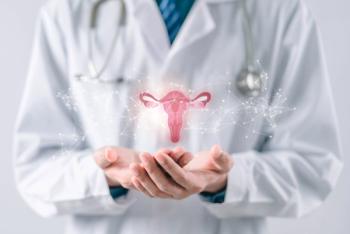
Link found between fish oil intervention, genotype, and offspring AD risk
In a recent study, only mothers with a COX1 rs1330344 TT genotype had reduced offspring atopic dermatitis risk following fish oil supplementation.
The maternal cyclooxygenase-1 (COX1) genotype impacts the association between ω-3 long-chain polyunsaturated fatty acid (n-3 LCPUFA) supplementation and childhood atopic dermatitis (AD) risk, according to a recent study published in JAMA Dermatology.1
A significant proportion of individuals worldwide are impacted by AD, which currently has no preventive possibilities. However, interventions during pregnancy are considered promising for AD prevention. This time may be crucial for AD prevention, as AD initially develops during early childhood in most patients.2
An association has been hypothesized between n-3 LCPUFAs, also known as fish oil, and reduced atopic disease risk.1 This may be accomplished by suppressed inflammatory processes following fish oil supplementation. However, data about this potential association remains lacking.
Investigators conducted a secondary analysis using maternal and child COX1 genotypes to determine the association between prenatal n-3 LCPUFA supplementation and childhood AD risk. Participants in the initial analysis included pregnant women at 22 to 26 weeks’ gestation.
Study participants were randomized 1:1 to receive 2.4 g/d of n-3 LCPUFA or placebo. Supplementation occurred through the first week after delivery, and the age of AD onset up until the age of 3 years was reported in offspring. Follow-up visits occurred at 1 week, 1, 3, 6, 12, 18, 24, 30, and 36 months, and 6, 8, and 10 years.
For the follow-up, age of AD onset up to 10 years of age was reported in children aged 3 to 10 years. AD was determined by the presence of 3 of the 4 major Hanifin and Rajka criteria and at least 3 of 23 minor criteria. The Illumina HumanOmniExpressExome-8 V1.2 BeadChip was used to perform genotyping of mothers and offspring.
There were 635 children included in the final analysis, 57% of whom were female and 43% were male. Fifty-one percent were in the intervention group and 49% were in the control group.
Thromboxane A2 (TXA2) pathway eicosanoids were reduced in patients with n-3 LCPUFA supplementation during pregnancy. Additionally, significant reductions in 11-dehydro-TXB2 and 11-dehydro-2,3-dinor-TXB2 were reported after the n-3 LCPUFA intervention.
There were also associations between single-nucleotide variations (SNVs) involved in the COX1 enzyme and TXA2 eicosanoid levels. This included the COX1 rs1330344 SNV and minor allele (C). Similar findings were reported for 2 individual TXA2 eicosanoids.
In the linear aggression models, n-3 LCPUFA supplementation was only associated with reduced levels of combined TXA2 eicosanoids in children with the TT genotype. No association was reported in children with the CT or CC genotypes.
An association between n-3 LCPUFA supplementation during pregnancy and offspring AD risk when aged 0 to 10 years was found only when evaluating this association based on the child’s COX1 rs1330344 genotype. An elevated risk of developing AD was not reported in children with the TT or CC genotypes.
The association between n-3 LCPUFA and AD risk was mediated by combined TXA2 eicosanoid levels among participants with the TT genotype. Prenatal n-3 LCPUFA, AD risk when aged 0 to 10 years, and COX1 rs1330344 genotype were all linked in a Cox proportional hazards regression model.
Overall, n-3 LCPUFA supplementation was not associated with AD risk. However, supplementation significantly reduced offspring risk in mothers with the TT genotype, vs no association in the CT genotype and increased risk in the CC genotype.
This indicated only mothers with the COX1 rs1330344 TT genotype had reduced risk of offspring AD development at ages 0 to 10 years following n-3 LCPUFA supplementation. Investigators recommended a personalized prevention strategy to reduce AD risk in pregnant mothers with the COX1 rs1330344 TT genotype.
Reference
- Chen L, Brustad N, Luo Y, et al. Prenatal fish oil supplementation, maternal COX1 genotype, and childhood atopic dermatitis: A secondary analysis of a randomized clinical trial. JAMA Dermatol. 2024. doi:10.1001/jamadermatol.2024.2849
- ThorsteinsdottirS, StokholmJ, ThyssenJP,et al.Genetic, clinical, and environmental factors associated with persistent atopic dermatitis in childhood. JAMA Dermatol. 2019;155(1):50-57. doi:10.1001/jamadermatol.2018.4061
Newsletter
Get the latest clinical updates, case studies, and expert commentary in obstetric and gynecologic care. Sign up now to stay informed.










